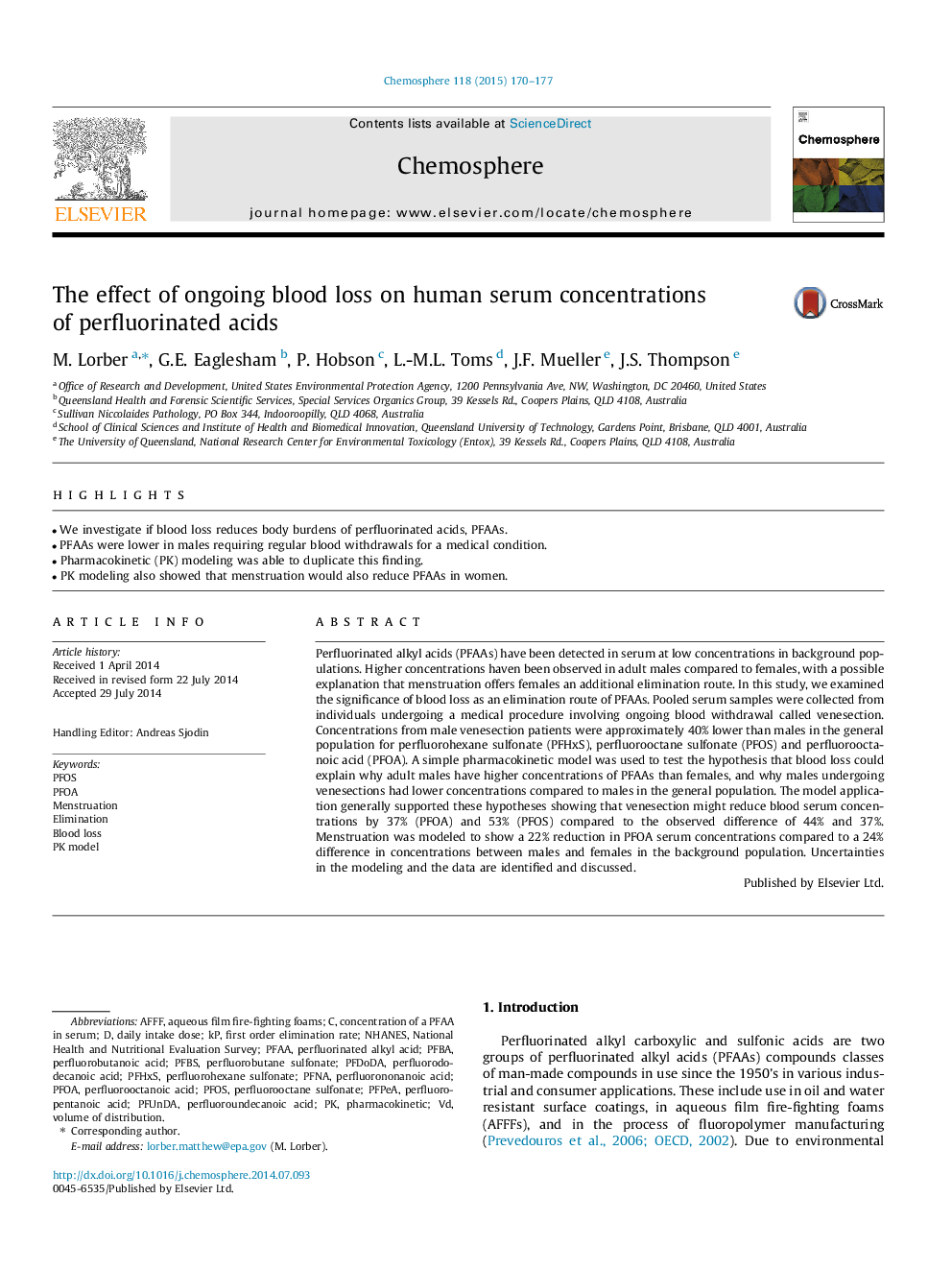| Article ID | Journal | Published Year | Pages | File Type |
|---|---|---|---|---|
| 6308361 | Chemosphere | 2015 | 8 Pages |
Abstract
Perfluorinated alkyl acids (PFAAs) have been detected in serum at low concentrations in background populations. Higher concentrations haven been observed in adult males compared to females, with a possible explanation that menstruation offers females an additional elimination route. In this study, we examined the significance of blood loss as an elimination route of PFAAs. Pooled serum samples were collected from individuals undergoing a medical procedure involving ongoing blood withdrawal called venesection. Concentrations from male venesection patients were approximately 40% lower than males in the general population for perfluorohexane sulfonate (PFHxS), perfluorooctane sulfonate (PFOS) and perfluorooctanoic acid (PFOA). A simple pharmacokinetic model was used to test the hypothesis that blood loss could explain why adult males have higher concentrations of PFAAs than females, and why males undergoing venesections had lower concentrations compared to males in the general population. The model application generally supported these hypotheses showing that venesection might reduce blood serum concentrations by 37% (PFOA) and 53% (PFOS) compared to the observed difference of 44% and 37%. Menstruation was modeled to show a 22% reduction in PFOA serum concentrations compared to a 24% difference in concentrations between males and females in the background population. Uncertainties in the modeling and the data are identified and discussed.
Keywords
PFOAPFPeAperfluorododecanoic acidPFDoDAPFUnDAPFNAPFAAperfluorohexane sulfonateAFFFPFBAPFBSPFHxSNHANESPerfluorobutane sulfonatePFOSBlood lossPerfluorononanoic acidPerfluoroundecanoic acidperfluorobutanoic acidVolume of distributionEliminationPerfluorooctane sulfonatepharmacokineticMenstruationPerfluorooctanoic acid
Related Topics
Life Sciences
Environmental Science
Environmental Chemistry
Authors
M. Lorber, G.E. Eaglesham, P. Hobson, L.-M.L. Toms, J.F. Mueller, J.S. Thompson,
